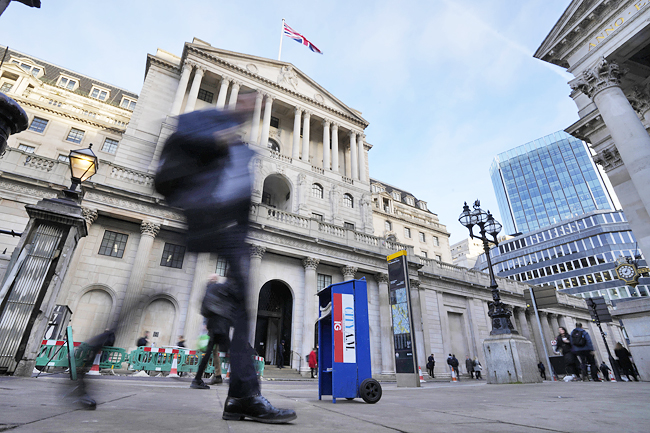LONDON (AP) – Wages in the United Kingdom (UK) spiked sharply in April, official figures showed yesterday, a development that is set to cement expectations that the Bank of England will raise interest rates once again next week.
The Office for National Statistics found that people’s regular pay packets, which exclude bonuses, were up 7.2 per cent in the three months to April from the same period the year before, as against the equivalent 6.6 per cent increase recorded in January.
The spike, which was largely due to a near-10-per-cent increase in the minimum wage at the start of April, was the highest on record aside from the period of the coronavirus pandemic when the figures were heavily distorted.
Though wages are still lagging the headline rate of inflation, which at the last count stood at 8.7 per cent, the increase is likely to feature heavily in next week’s deliberations among rate-setters at the Bank of England. Higher wages raise the prospect of more spending in the economy, which can fuel price rises.
Senior economist at the Resolution Foundation Hannah Slaughter said this “welcome news” for workers will “worry the bank, and by extension anyone looking to remortgage, as it adds to the case for raising interest rates for longer”.

Like other central banks around the world, the Bank of England has sought to keep a lid on inflation, which over the past year has been fuelled by the situation in Ukraine. That sent energy prices soaring, a development that then led to price increases across a wide array of goods and services. The Bank of England has sharply increased its main interest rate to 4.5 per cent from a low of 0.1 per cent in late 2021. Higher interest rates help lower inflation by making it more expensive for households and businesses to borrow, meaning they potentially spend less, thereby reducing upside demand pressure on prices.
Separately, the statistics agency said the country’s jobless rate fell to 3.8 per cent in the three months to April, from 3.9 per cent in March.
Most economists had been expecting the rate to edge up to four per cent.
As the unemployment rate fell, the agency said, the country’s employment rate rose to 76 per cent from 75.9 per cent, with the number of people in work at an all-time high of 33.1 million.
Director of economic statistics at the agency Darren Morgan said the “biggest driver” in recent jobs growth is health and social care, followed by hospitality.
Though yesterday’s figures were broadly positive, there are still a number of issues surrounding the UK’s labour market, with the economy barely growing and inflation running higher than many policymakers would have hoped.
Director of the Work Foundation at Lancaster University Ben Harrison said the UK, with 2.55 million people long-term sick, is the “worst performer” among the Group of Seven leading industrial nations for workforce participation since the start of the coronavirus pandemic over three years ago.





